The Goldendoodle is a breed prized for its luscious silken curls, but it may be a surprise to prospective owners to find that their coat can actually change quite considerably over their lifetime.
In this article, we will get into the nitty-gritty of what a Goldendoodle may look like at different key ages with pictures to match.
Table of Contents
Short Goldendoodle History
The Goldendoodle is perhaps one of the most famous and instantly recognizable members of the Poodle cross family.
The Goldendoodle is first recorded as existing in the late 1960s when a breeder chose to mix a Poodle with a Golden Retriever. This primarily came about as Golden Retrievers were well established as guide dogs for the visually impaired. However, they shed heavily making them incompatible with visually impaired people who had dog allergies. Introducing Poodle genetics often reduced shedding making the dog much more accessible to a variety of people.
As Poodles are equally, if not more intelligent than their Golden Retriever counterparts, this ensured the new hybrid remained trainable as an assistance dog. As time went on it was almost inevitable that people would seek out this mixed breed as a domestic pet given their friendly nature and good temperament around children.
The other appealing feature of the Goldendoodle as a domestic pet is that it can come in a variety of sizes to meet individual living situations. Depending on what size of Poodle is used (Toy, Miniature, or Standard) you can have varying sizes of Goldendoodle – Mini, Medium, or Standard. Added to this they are fairly healthy dogs, benefiting from the phenomena of hybrid vigor. This means you can expect a Goldendoodle to reach up to 15 years old!
Does the Generation of the Goldendoodle Make a Difference to the Coat?
If you are new to the world of hybrid or mixed breed dogs, the concept of generations may feel a little incomprehensible. A very quick crash course is detailed below:
First generation (F1): First crossing of a Golden Retriever and Poodle, the resultant pup is a Goldendoodle and is 50% Golden Retriever and 50% Poodle.
First Generation Back Bred (F1B): A Goldendoodle who is back bred to either a Golden Retriever or Poodle. This means the pup will be an F1B and will be 25% Golden Retriever and 75% Poodle if crossbred back to a Poodle. They will be 75% Golden Retriever and 25% Poodle if crossbred back to a Golden Retriever. If bred back to the non-Poodle parent they are usually referred to an F1B Reverse.
Second Generation (F2): Crossing two F1 Goldendoodles. This means the mix is still 50% Poodle and 50% Golden Retriever genetics. However, breeders can be selective about the types of Goldendoodle they pick. Typically, they pick the ones with the more desirable curly Doodle-like coat which increases the chance of it being passed on.
Conversely, the F2 can also throw out the most eclectic litter as there are 4 Golden Retriever genes and 4 Poodle genes in the mix. This is sometimes known as the grandparent effect. The only way to be sure of coat types and colors is to have the parents genetically tested before breeding.
Second Generation Back Bred (F2B): This is the same as the F1 but uses an F2 Goldendoodle. If bred back to the Retriever they are known as an F2B reverse.
F3 or Multi-Generational: This is where it gets confusing, breeders can then get creative with crossing F2 Goldendoodles with Poodles, Golden Retrievers or Goldendoodles. At this point, they are generally referred to as multi-generational.
We have a more in-depth generations article that can teach you more about hybrid crossing called Cavapoo Generations Explained.
The main difference that generation can have on the coat type of your Goldendoodle refers to how much Poodle genetics are present. An F1 Goldendoodle has a pure 50/50 mix of Poodle and Golden Retriever meaning there is a good chance that they will take on a Doodle-like coat. Sometimes a pup will take after their Golden Retriever parent more and may present with a flatter coat, the correction for this would be to crossbreed the pup back to a purebred Poodle in the hope of increasing the curl.
However, not all Goldendoodles will be curly. Check out the Flat Coated Goldendoodle to learn about those who take more after the Golden Retriever side of their family. For now though, we take a closer look at what you can expect from an F1 Goldendoodle coat.
Goldendoodle Puppy Coat
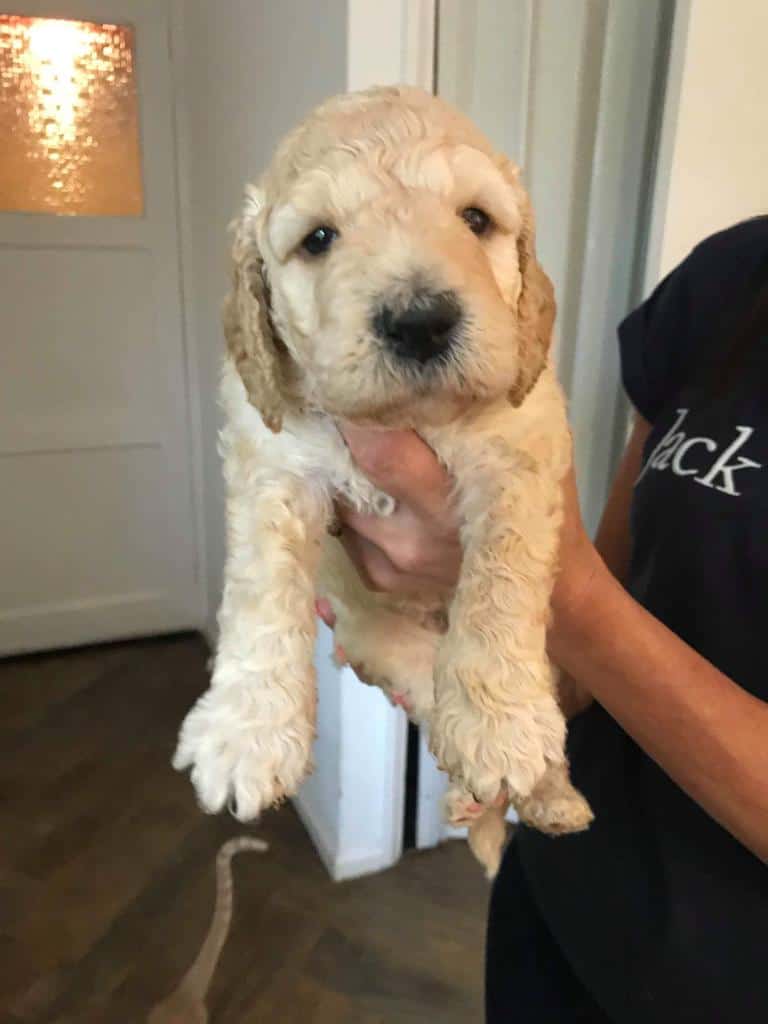
They do not come out curly! Now, this may be a serious shock but very few Doodle hybrids come out curly. In fact, it is much more likely that your Goldendoodle puppy will look decidedly Golden Retriever-like, other than it may have picked up some Poodle coloring.
A Goldendoodle’s puppy coat is very fine, fluffy, and often lies flat to their body. They will not shed particularly much and given the short nature of their coat, they will not be prone to matting. This is the stereotypical puppy coat that feels soft and fluffy and just begs for you to run your fingers through.
Some people swear that by examining the hair over your Goldendoodle pup’s nose and muzzle you may be able to determine if they show a propensity to a curly coat but this has never been scientifically proven. As it stands there is no definitive way to determine from a puppy just what type of adult coat they may develop outside of genetic testing.
If you are absolutely heart set on the curly Doodle coat an F2 Goldendoodle may be a better option as by breeders selecting two curly Goldendoodle parents you have a higher chance of the puppy exhibiting the same. However, this is not an exact science either as both Goldendoodles could be carrying straight coat genes.
Now, just because their puppy coat appears low maintenance this is not an excuse to skip brushing. It is essential you acclimatize your Goldendoodle puppy to grooming tools like brushes and ideally dryers early. This avoids them becoming fearful in later life and will make the whole grooming experience less stressful for you both.
Goldendoodle Coat at 3 Months
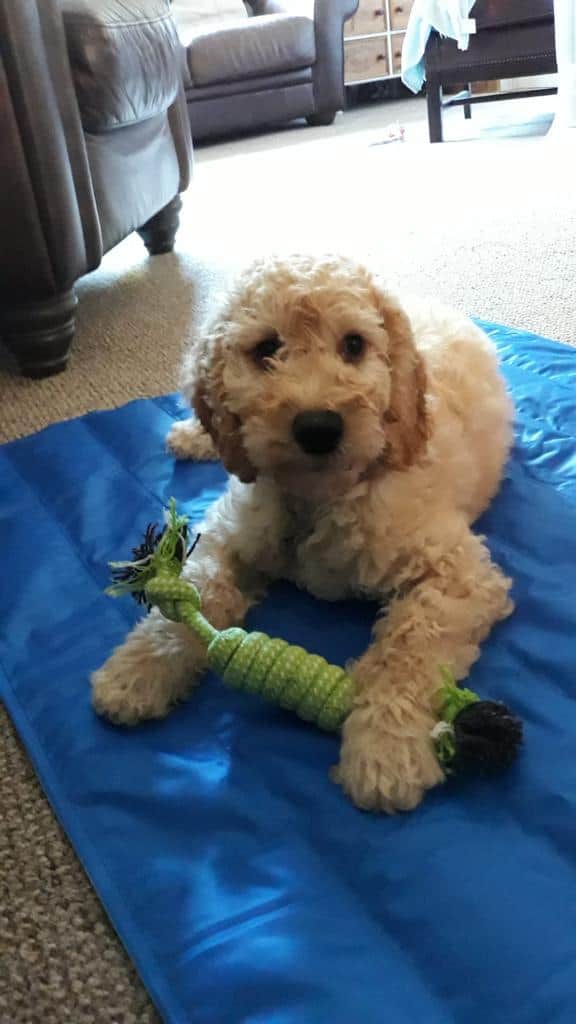
At three months, your Goldendoodle puppy will be at peak fluffball stage. Their puppy coat will likely have reached its maximum length and coloring will be fairly well established. Any patterning that your pooch will likely exhibit may have become more enhanced.
As your pup’s coat will be longer now, this may be a good opportunity to consider introducing them to a professional groomer. It is key at this stage that they should not cut their puppy coat but instead a bath, dry, hygiene groom of their intimate areas and a face trim may be all that is required.
Again at-home brushing is key, not only will it build confidence in your dog but as they begin to reach the stage that their coat will change, regular brushing will ensure any excess hair is brushed out to avoid matting.
Goldendoodle Coat at 6 Months
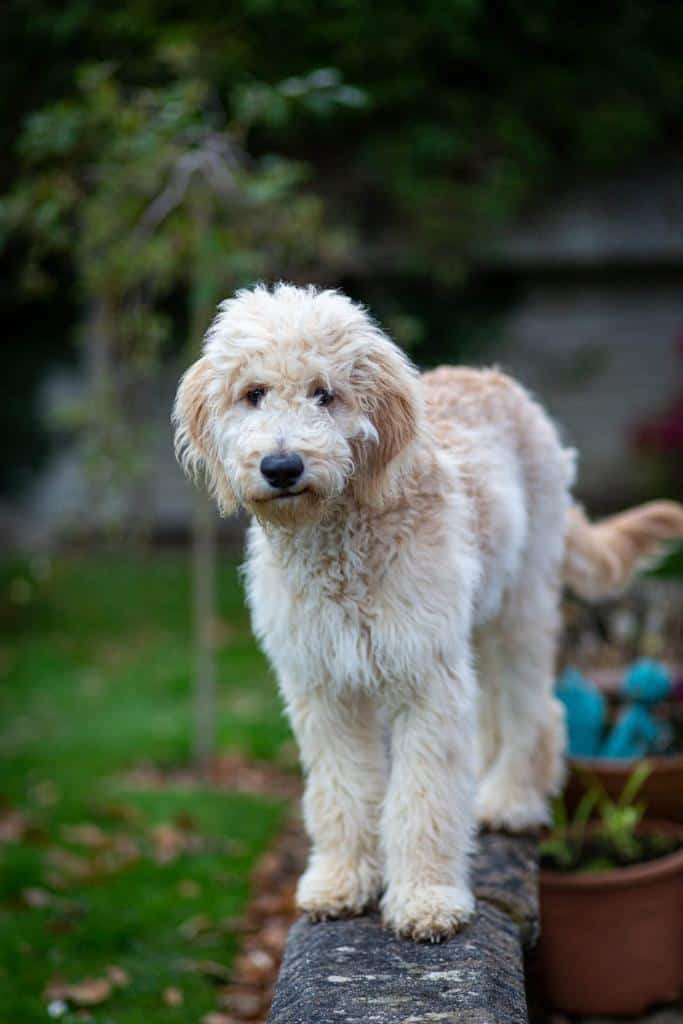
While some unscrupulous breeders may tout Goldendoodles as truly hypoallergenic we know in fact that all dogs will shed hair and dander to some degree. It is correct that a Goldendoodle may be lesser shedding than other breeds however, at age 6 months they will shed their fluffy puppy coat meaning they will leave a trail of puppy hair behind them at least for a short period.
During this time they may look a little ramshackle as they have patches of fluffy puppy hair and tufts of coarser adult hair. Don’t give up on your little gremlin though this is normally fairly short-lived. This exciting stage is when you will likely begin to get the first true indication of what you can expect from your adult Goldendoodle coat. Largely speaking Goldendoodle coats fall into four categories, flat, straight, wavy, or curly.
The flat and straight coated Goldendoodle will look much more similar to their Golden Retriever parent, while wavy or curly variations will look decidedly more Doodle-like. Strictly speaking in an F1 Goldendoodle where they are a 50/50 split of Golden Retriever and Poodle it would be expected that they would take on a wavy low shedding coat however this is never a definitive guarantee.
Goldendoodle Coat at 1 Year
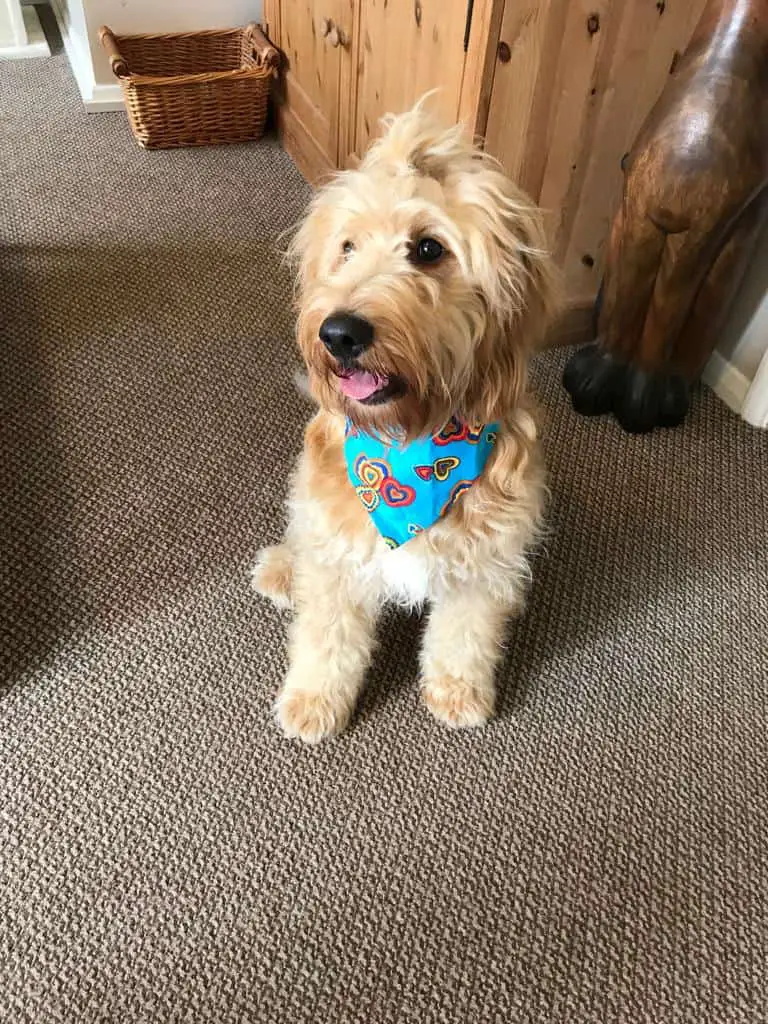
By one year old your Goldendoodle will have continued its steady transition from puppy to adult coat. Any shedding should reduce and if a proper grooming regime has not been implemented this is where you may begin to encounter difficulty with matting.
At 12 months you can begin to implement a professional grooming regime, while it is unlikely that you will need to attend more than 12 weekly at this stage, it is a good age to introduce clippers and nail clipping.
Don’t be alarmed if you start to see some changes in coloring. Some Goldendoodle owners report either lightening or darkening of their pups’ initial coloring and this may be due to hormonal changes occurring in your little pooch during this time.
Goldendoodle Coat at 2 Years
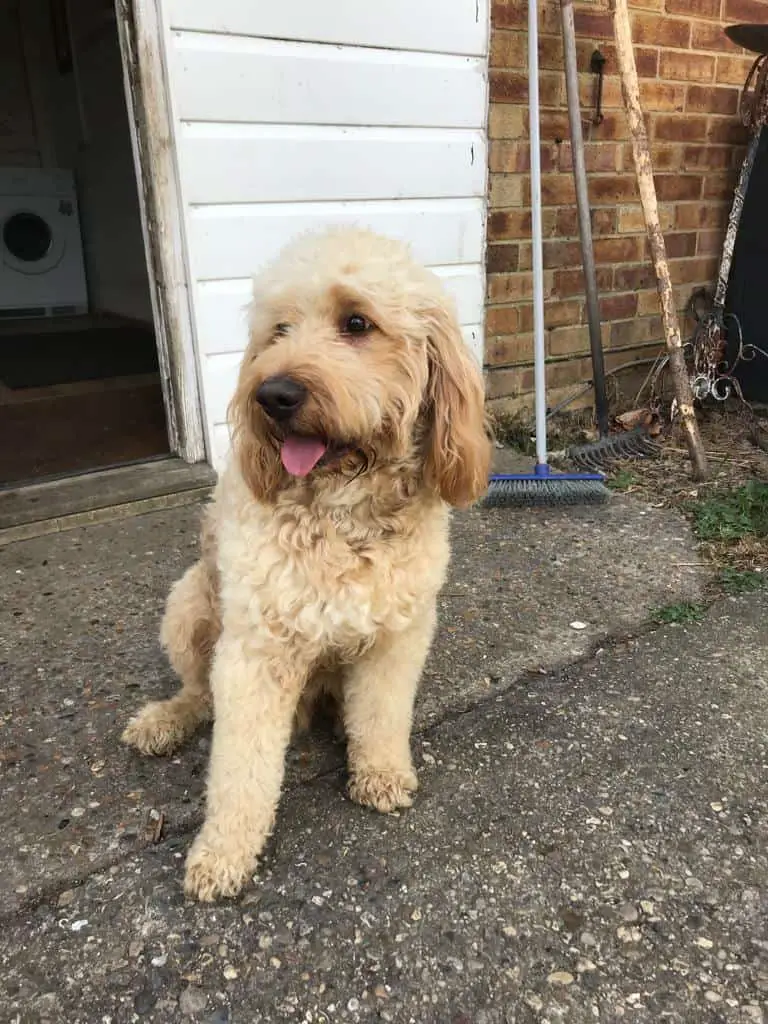
At 2 years of age, you can consider your Goldendoodle’s adult coat fully established. This will be coarser than their puppy coat but overall, the Goldendoodle often retains the softer hairlike coat prized in Doodle hybrids.
In some Goldendoodles, it can take until 2 years for their coat to fully mature so don’t be too alarmed if you are still noticing changes up until this point.
At this age, any work you put into familiarizing your pooch with grooming tools will really come into its own. It will not be unusual for a Goldendoodle to require daily grooming to keep them matt free.
At 2 years you will have an idea of how quickly your particular dog requires a professional groom. Be warned though, if you prefer your Goldendoodle in a lower maintenance shorter cut, this could mean a trip to the groomers as frequently as 6 to 8 weekly.
Goldendoodle Coat at 5 Years
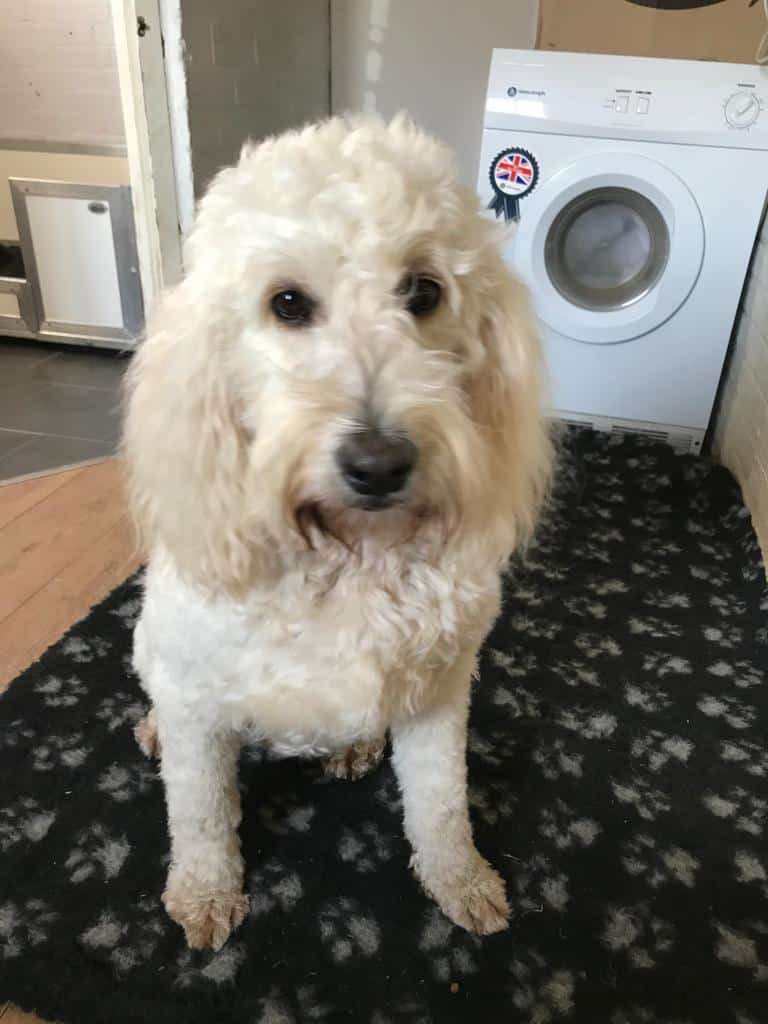
By 5 years of age, your Goldendoodle coat will be a product of things such as nutrition and grooming care. This can of course vary widely from owner to owner. A Goldendoodle supported with a good quality diet and given regular grooming may continue to exhibit a glossy coat while a Goldendoodle with less attentive owners may require to be kept in a very short cut and hair may appear coarser.
Goldendoodle Coat at 10 Years
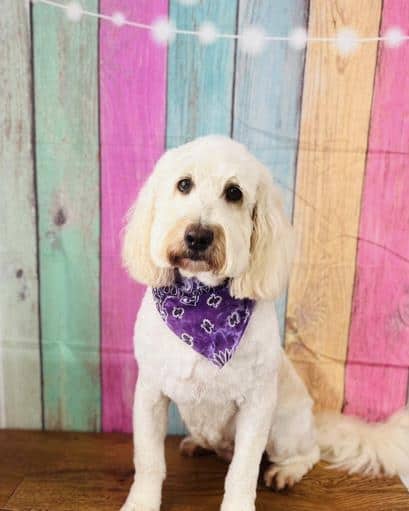
By ten years of age, it is not unusual for high-energy Goldendoodles to still appear puppy-like. However, their coat may be the giveaway. At ten plus years they are officially entering their senior years and this can often show up in their coat.
Often older Goldendoodle’s coats may begin to thin out or begin to fade in coloring or patterning. Many Goldendoodles that started out solid black, for example, may fade to a distinguished silver. Likewise, rich red tones may fade to blonde.
It is worth mentioning that older coats (and dogs) may need additional support in terms of supplements and conditioning treatments. Older dogs may not tolerate prolonged grooming sessions either meaning everything may just need to slow down a bit.
Either way, you will have had a fantastic companion for 10 plus years by this point and every gray hair will just tell the stories of the adventures you have shared.

